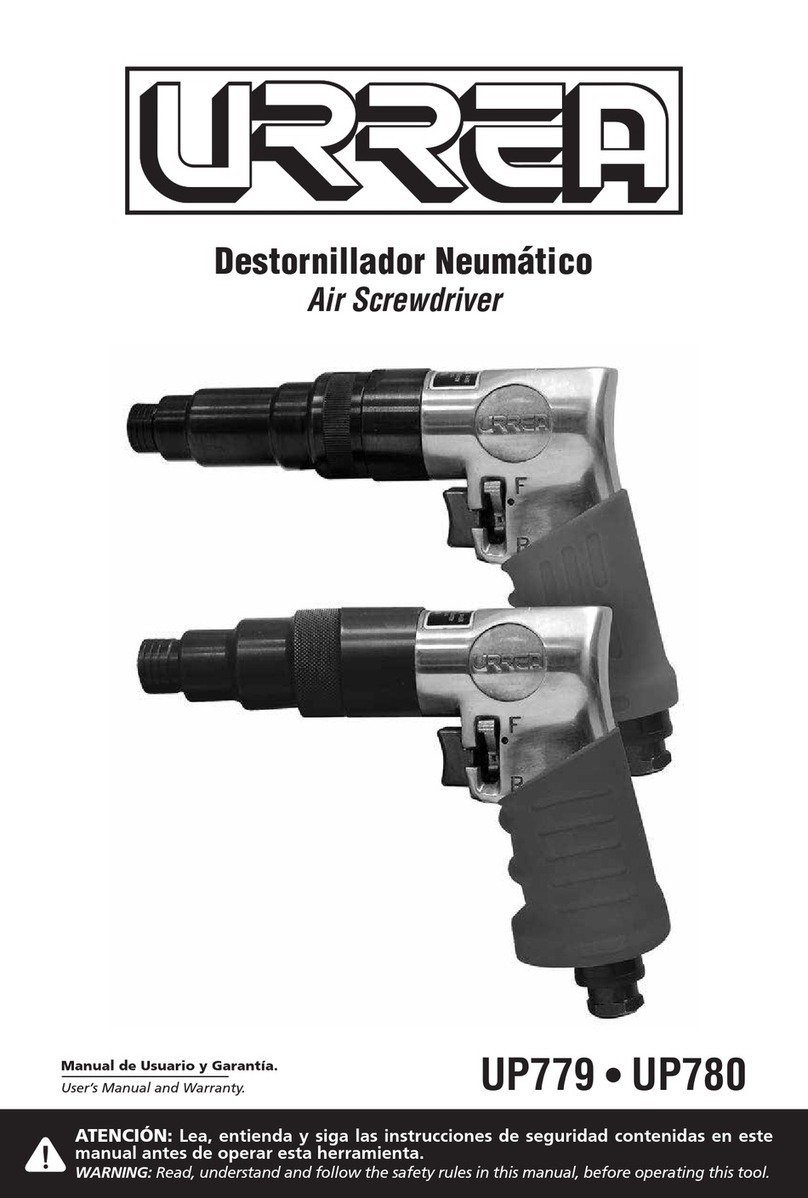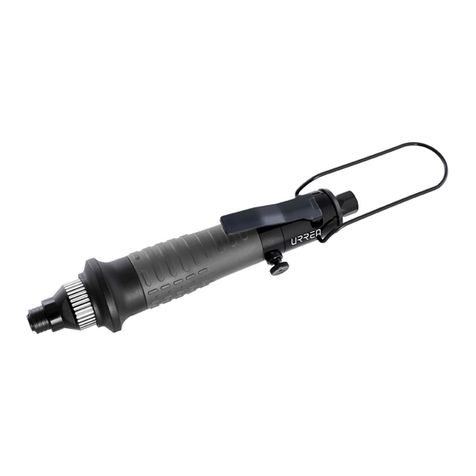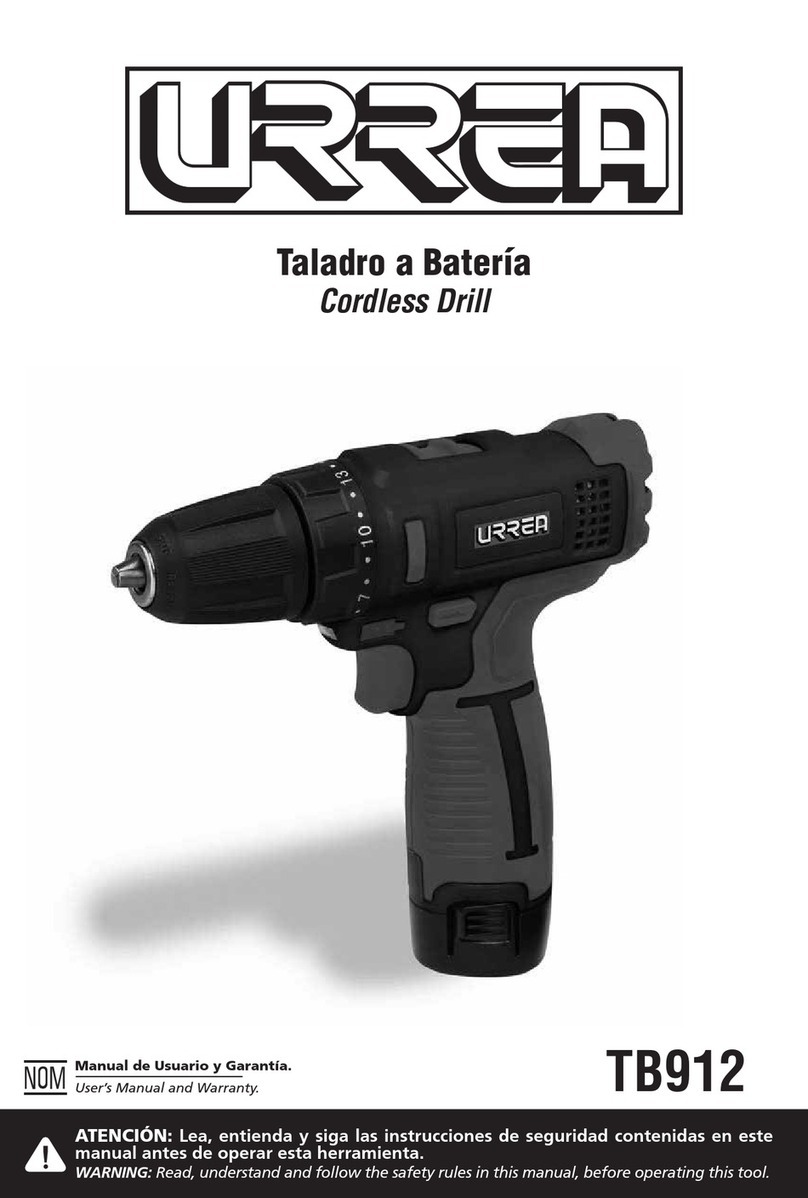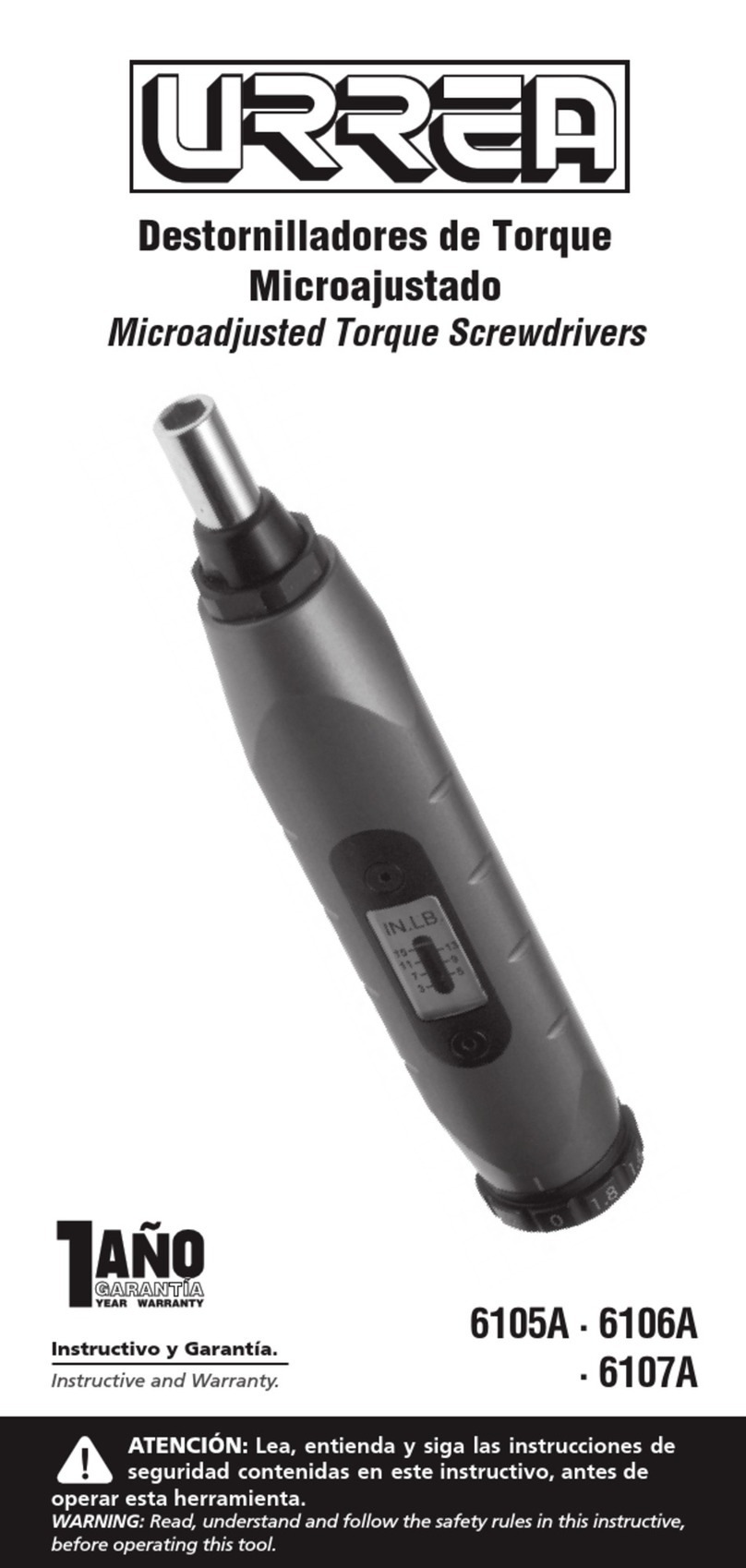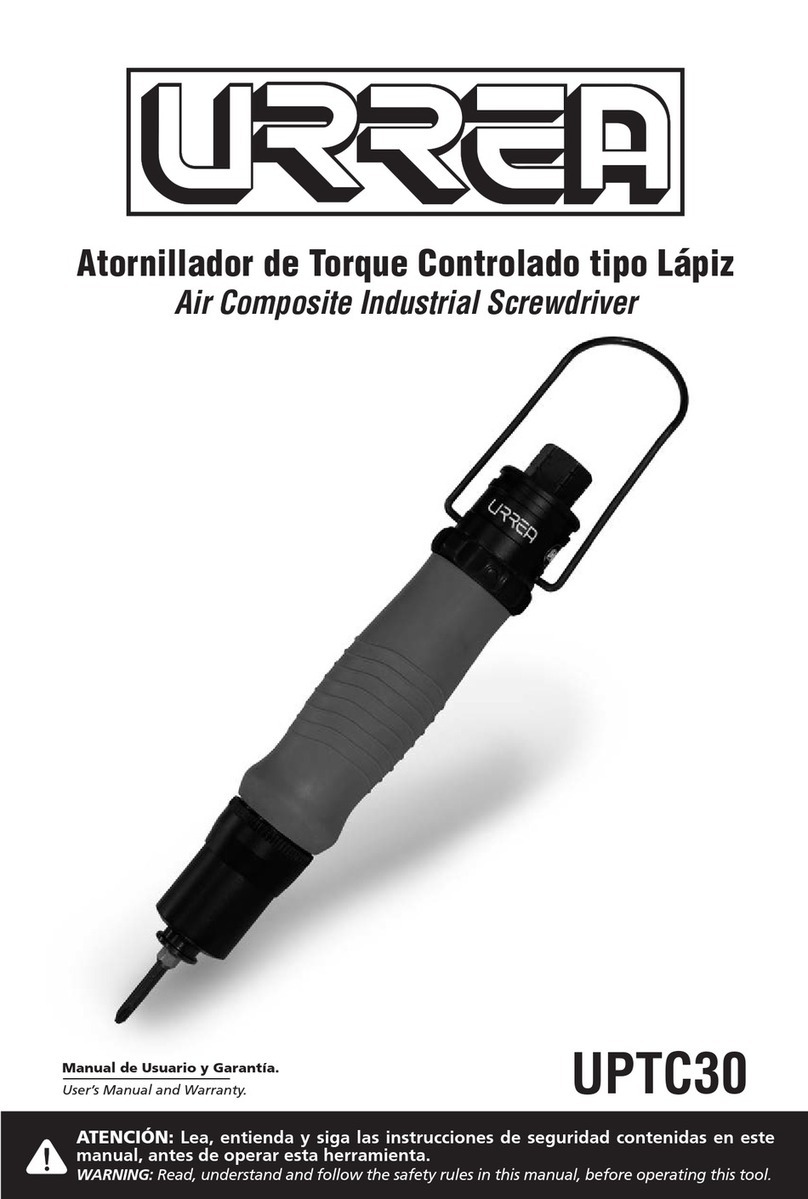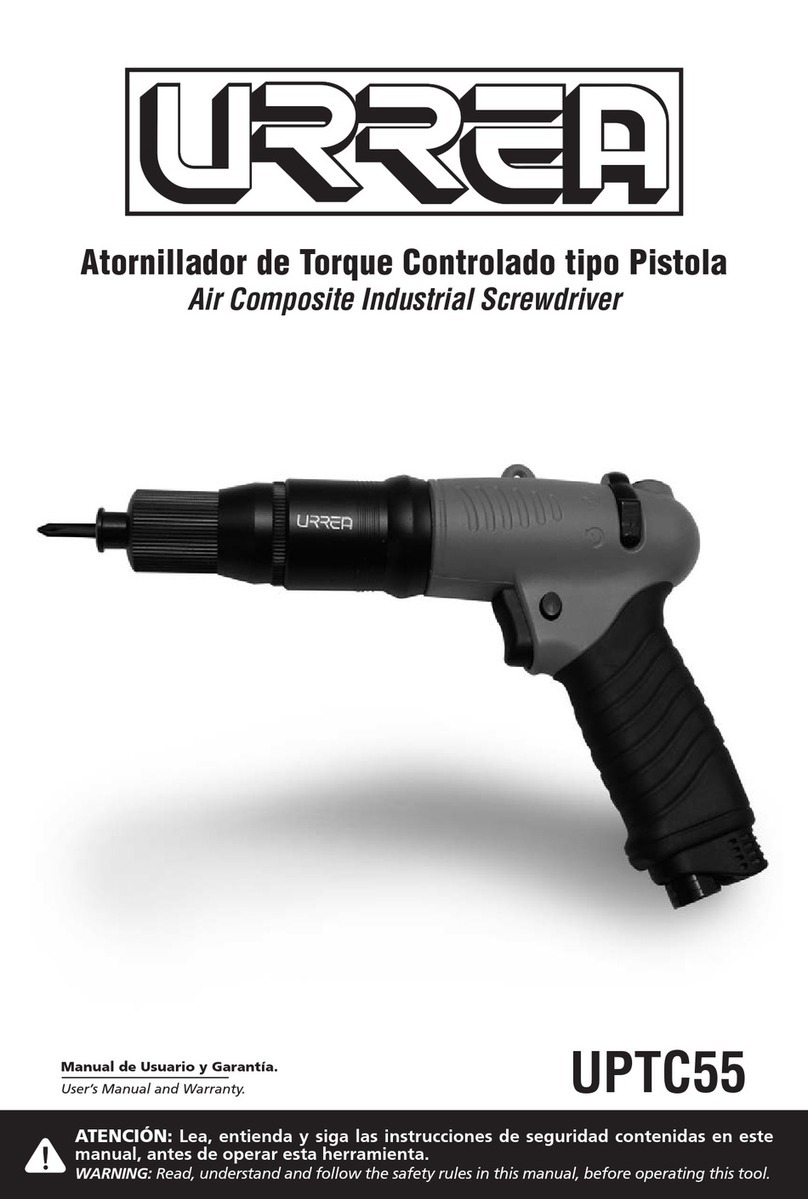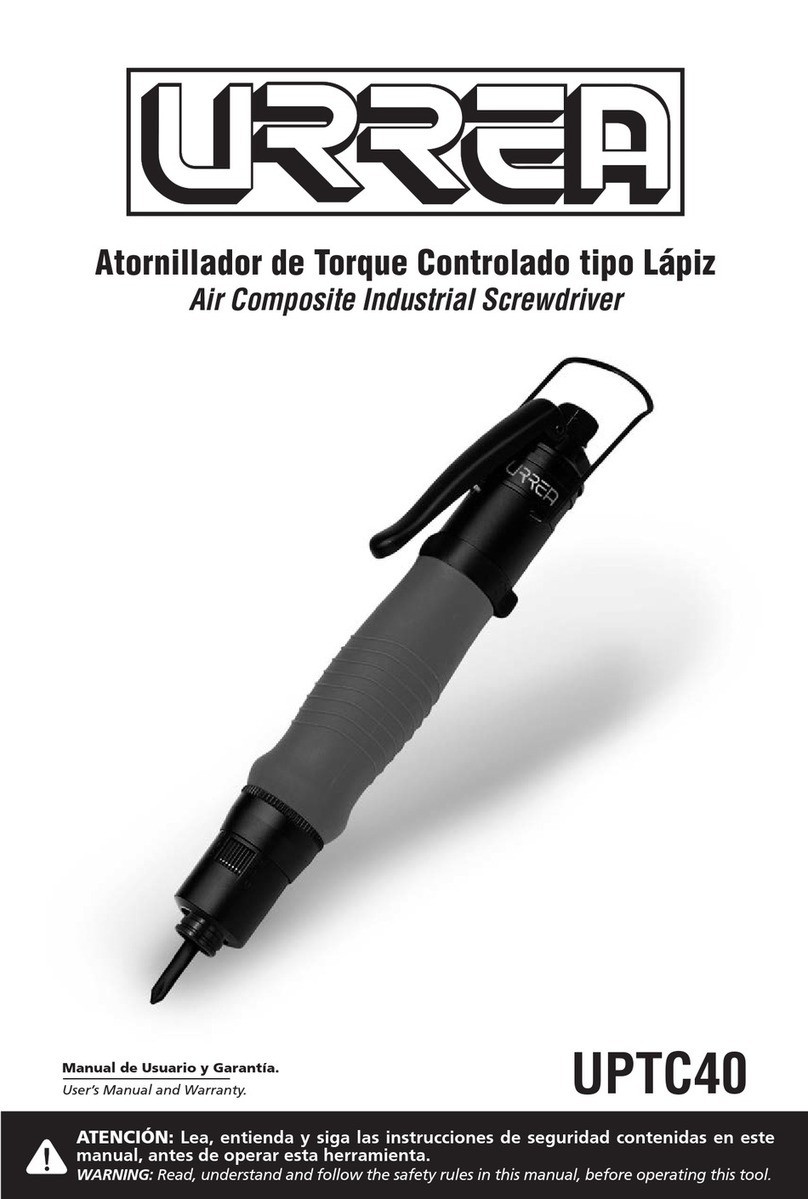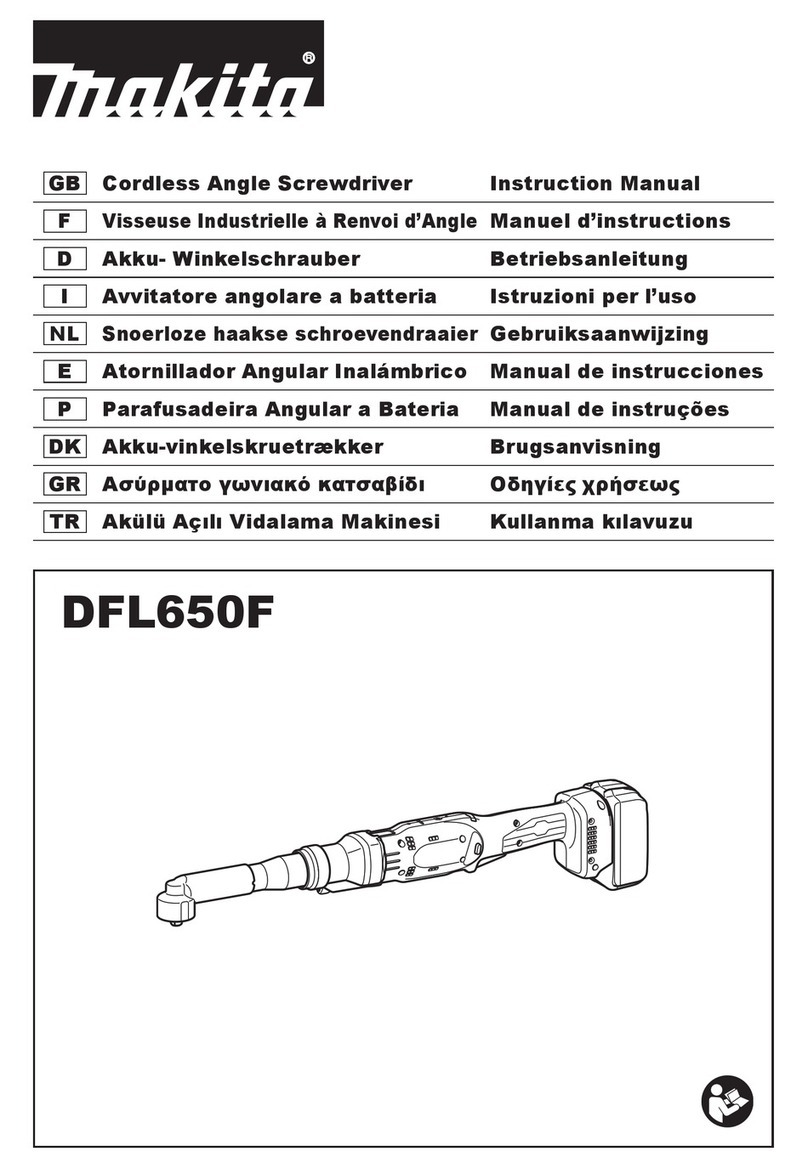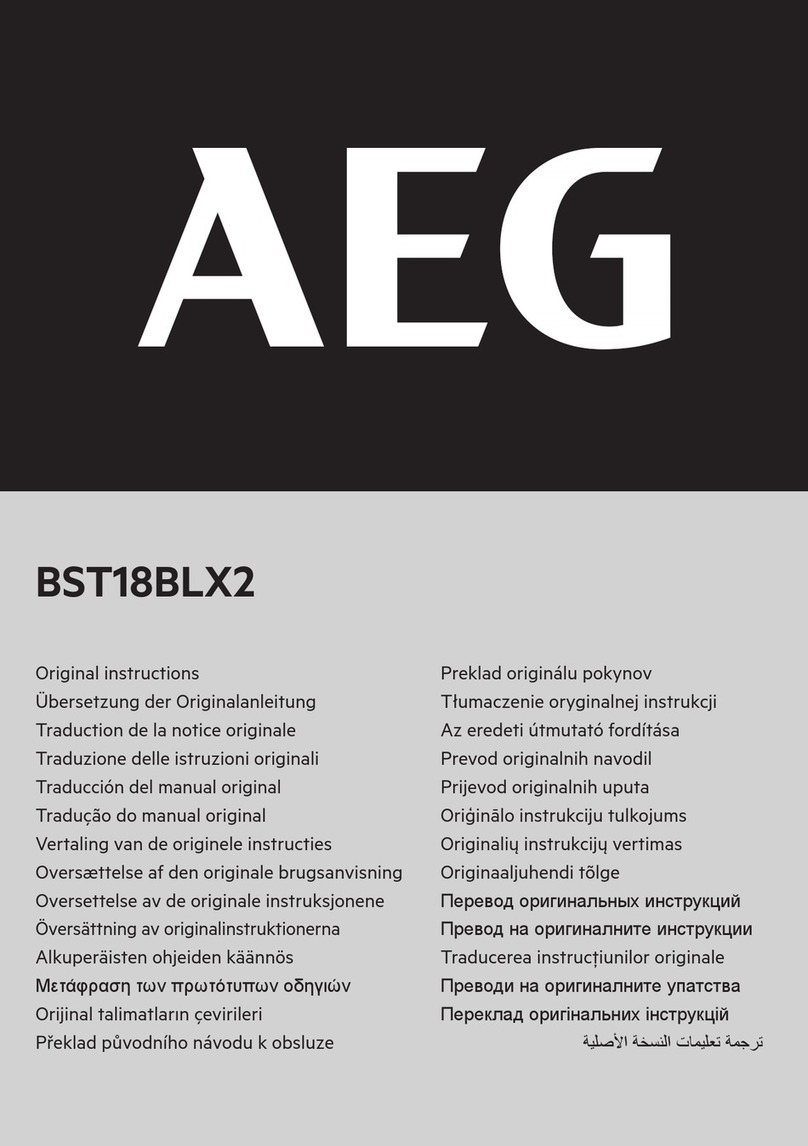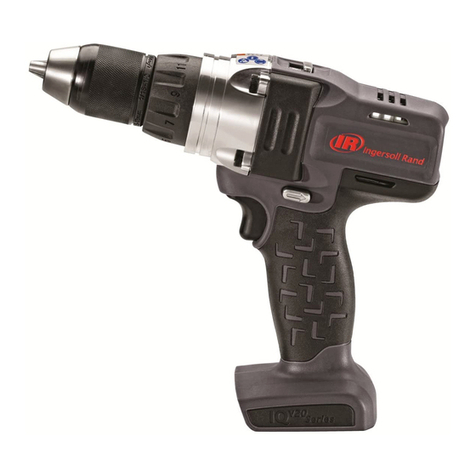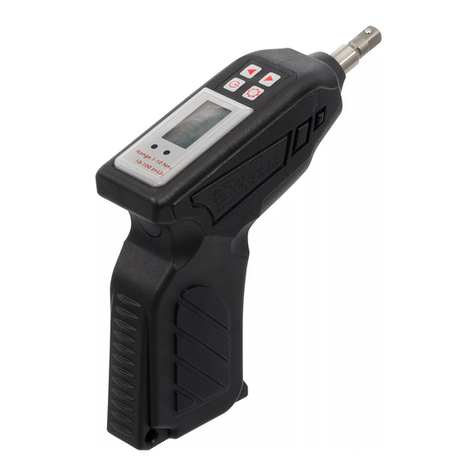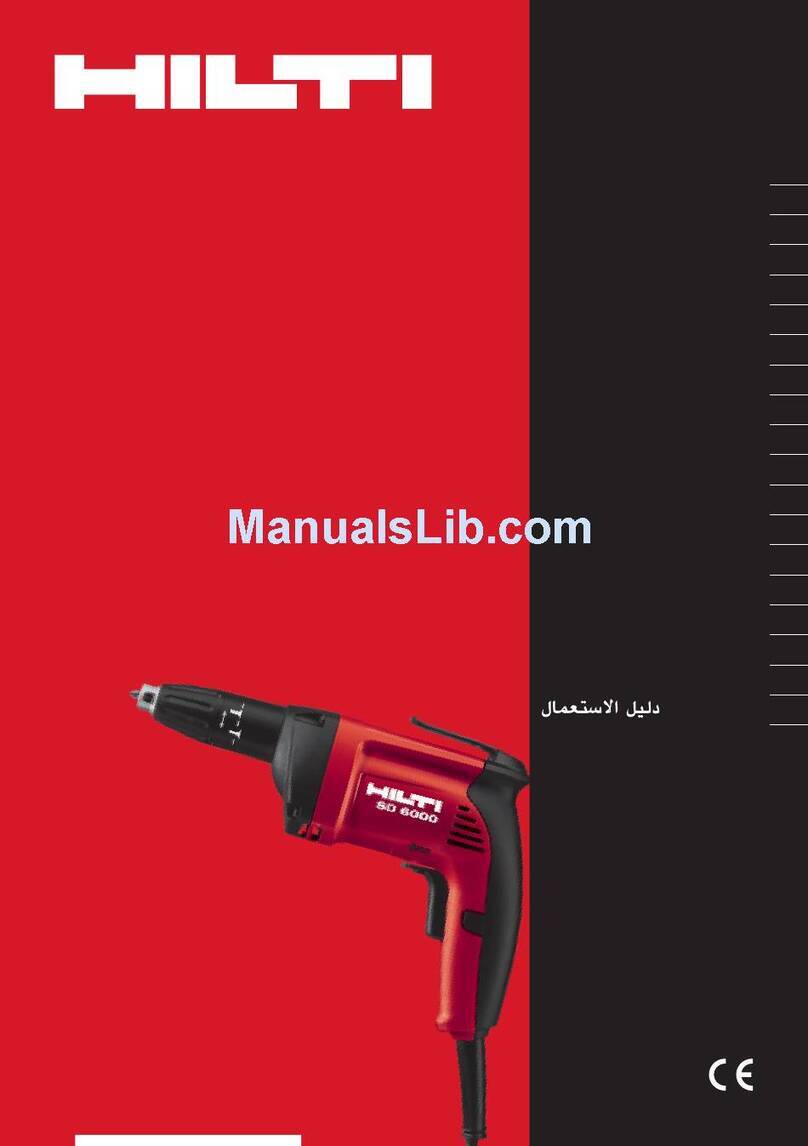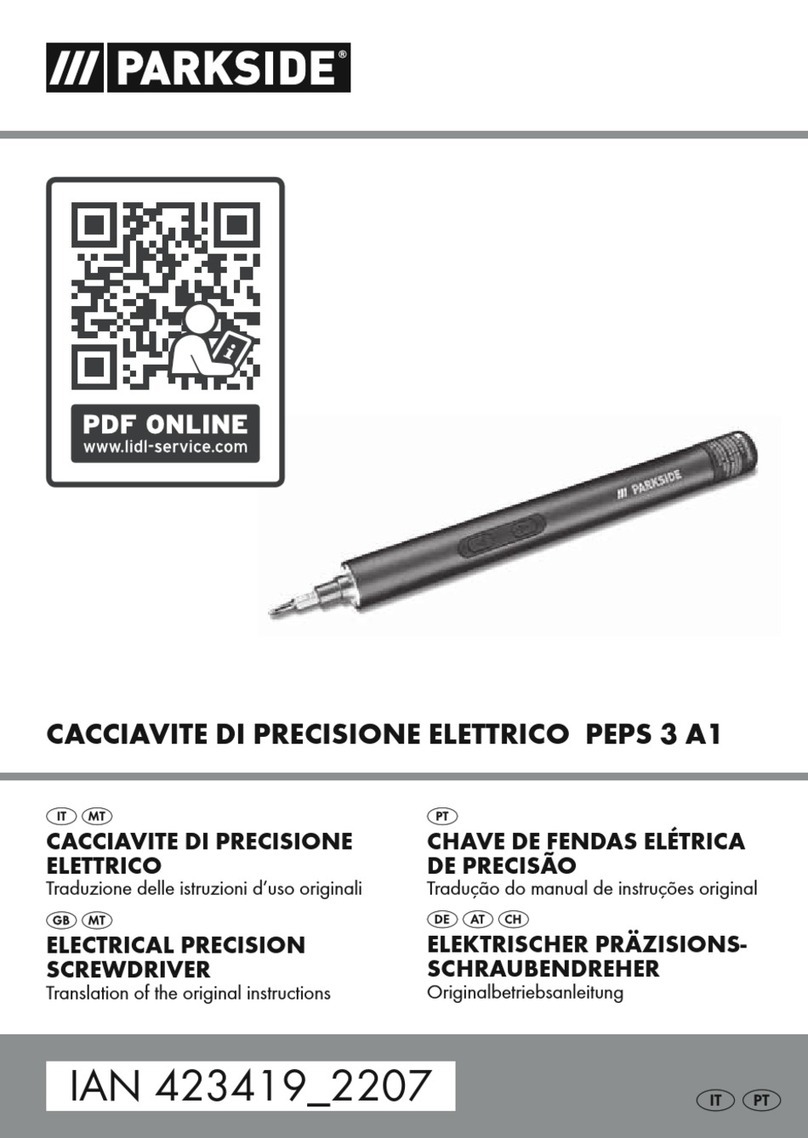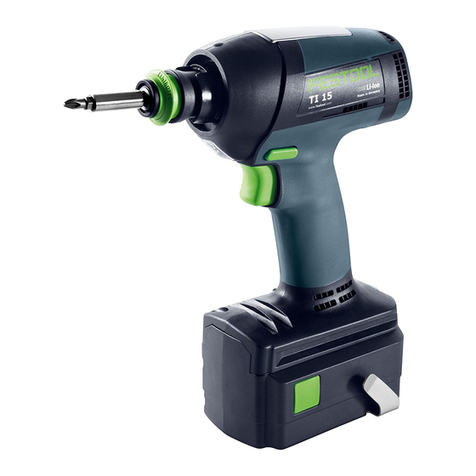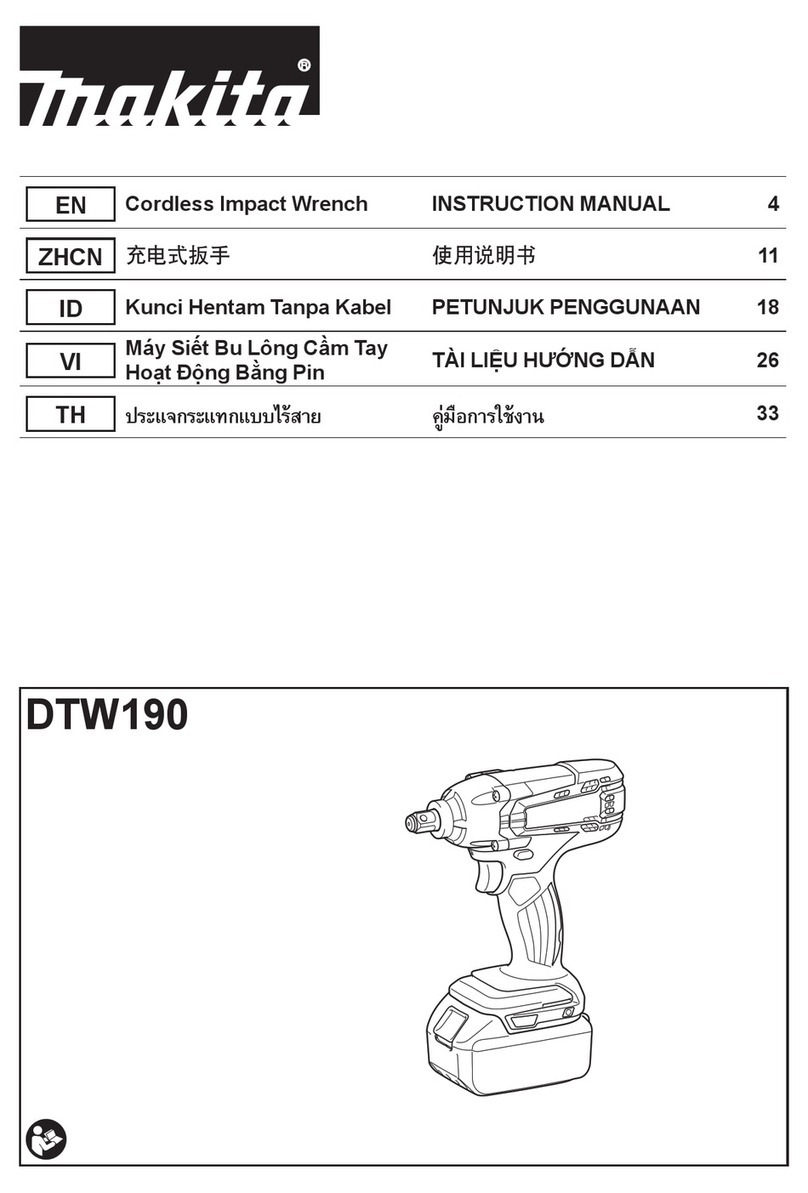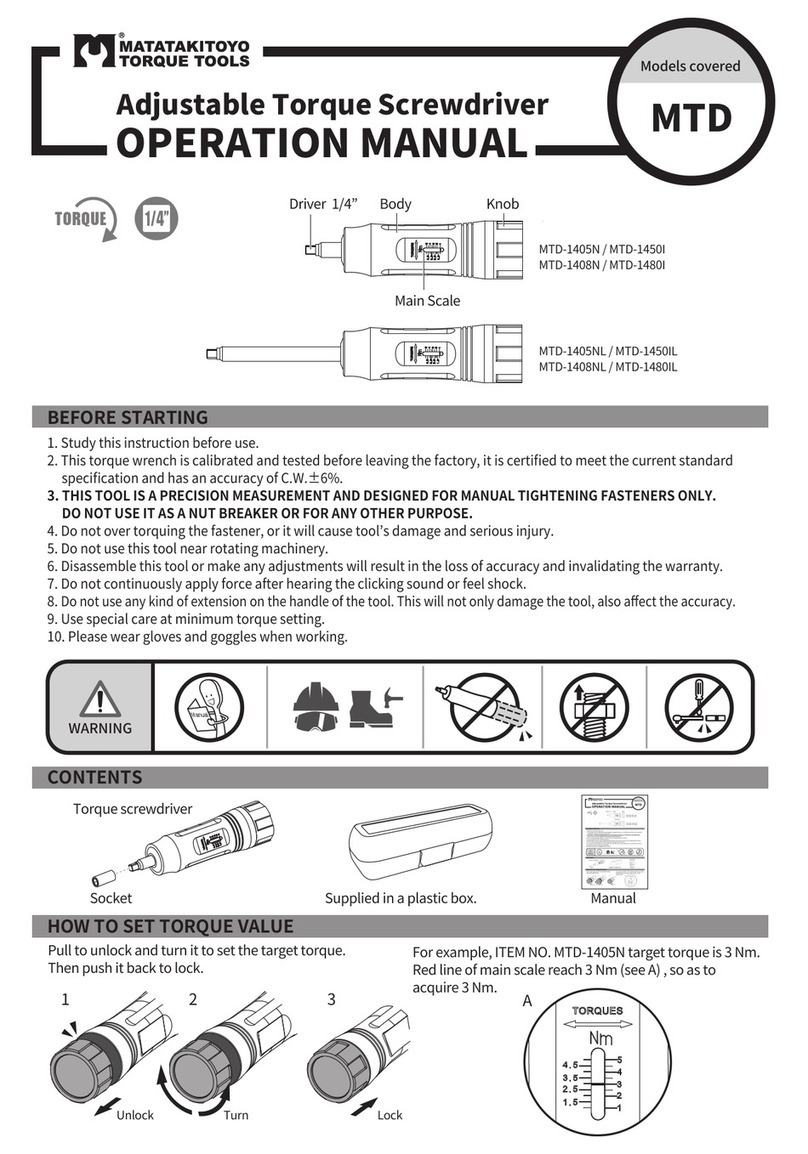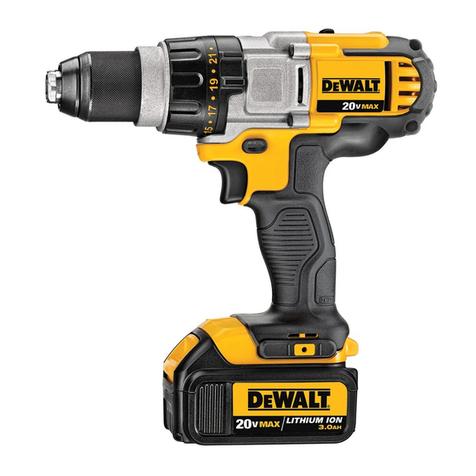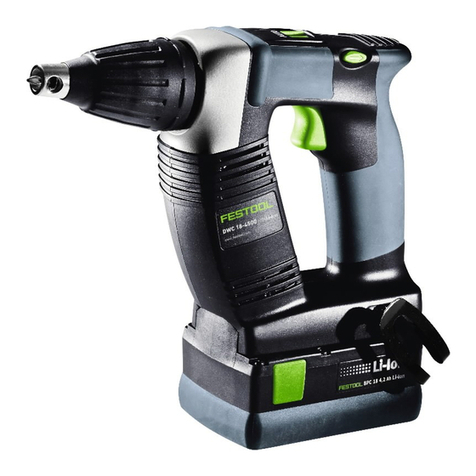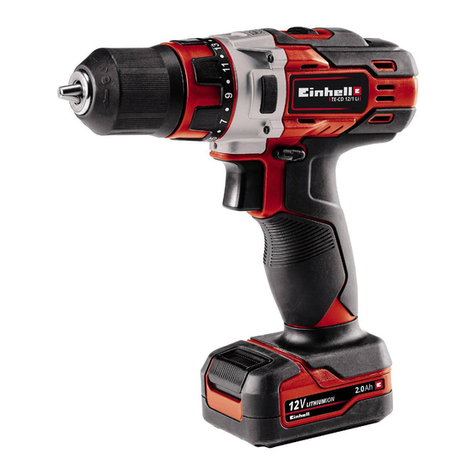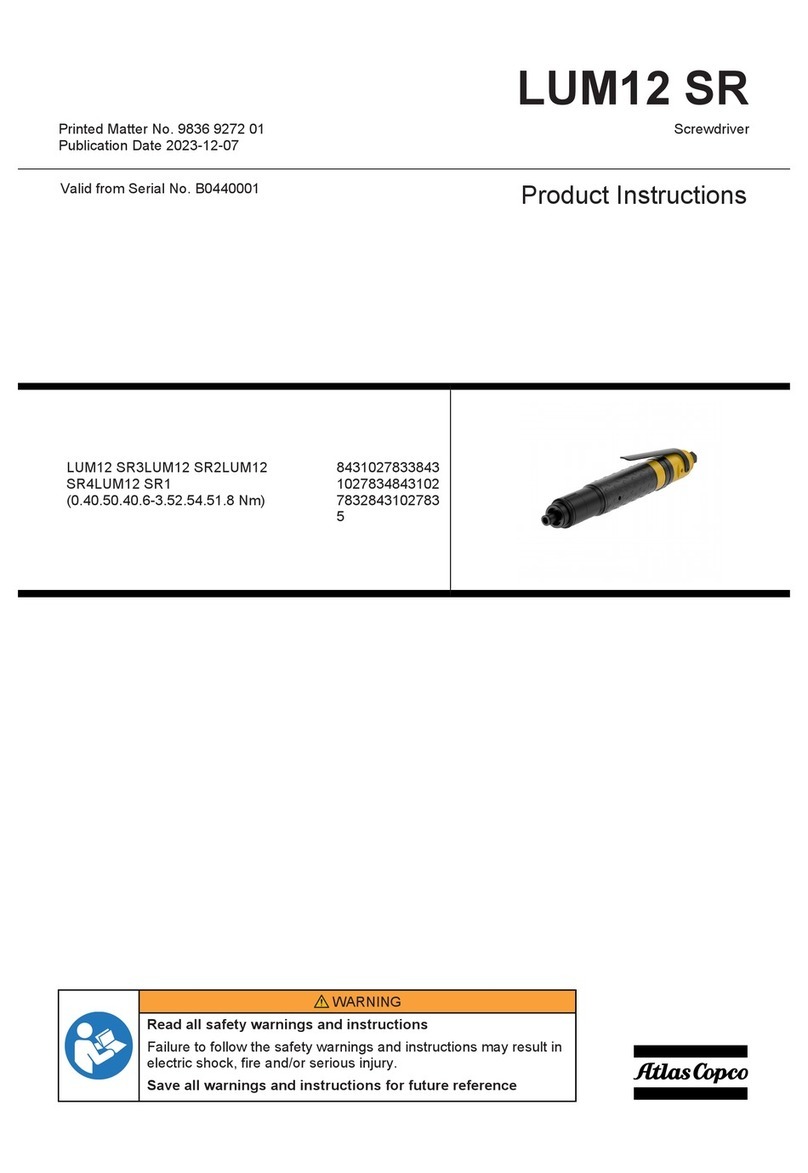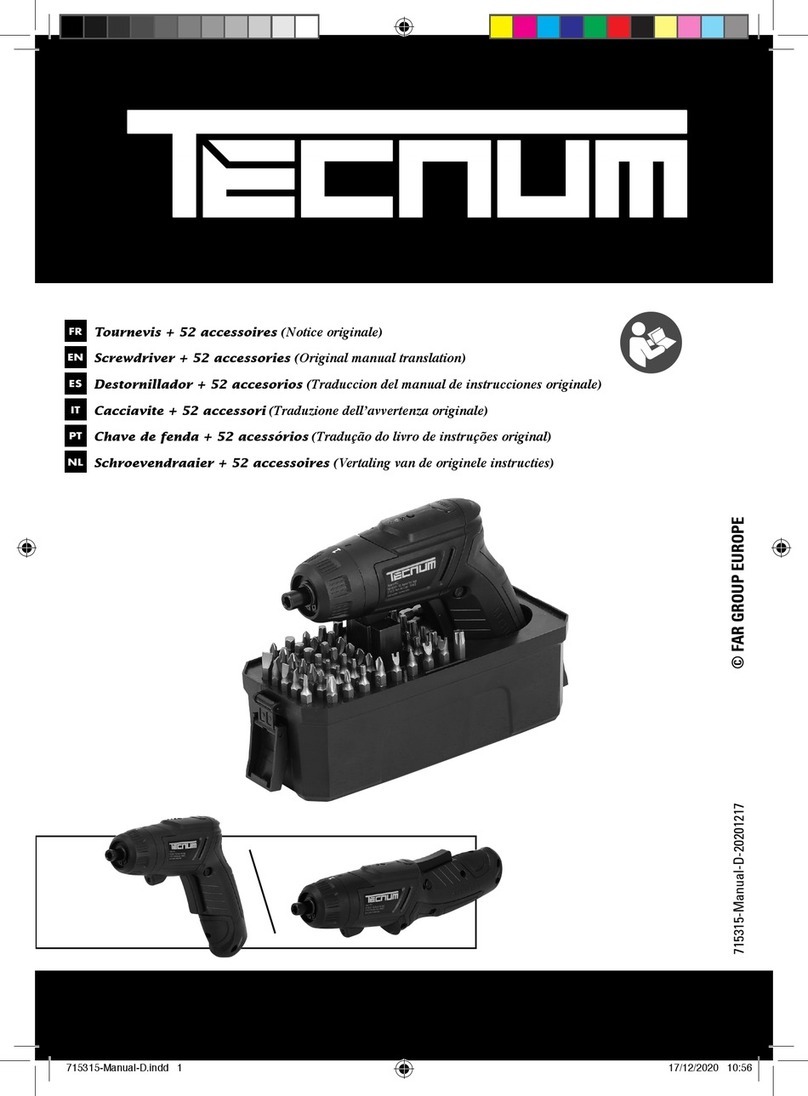
5
ESPAÑOL•Manual de usuario
otros lugares donde puedan existir conexiones
eléctricas. Si la situación llegara a ser inevitable,
corte la corriente del recinto antes de realizar
cualquier tipo de trabajo.
• Siempre utilice protección ocular durante la
operación de esta herramienta.
• Cuando termine de operar, las puntas, dados
y herramientas pueden estar calientes. Utilice
guantes de trabajo para manejarlas.
• Utilice protección auditiva cuando utilice la
herramienta por largos periodos de tiempo. Una
exposición prolongada a ruidos extremadamen-
te altos pueden causar sordera.
• Use guantes gruesos y acolchados, limite el
tiempo de exposición, tomando periodos de
descanso frecuentes. La vibración causada por la
percusión de martillo o la acción del atornillador
de impacto puede ser perjudicial para las manos
y los brazos.
• Asegure el material que se fijará. Nunca lo sos-
tenga en su mano o a lo largo de sus piernas.
Un soporte inestable puede causar la pérdida de
control de la herramienta y causar lesiones.
• Evite arranques accidentales. Asegúrese de
que el interruptor se encuentre en la posición
de apagado antes de conectar una batería. El
trasladar la herramienta con el dedo en el gati-
llo de arranque o insertando una batería en la
herramienta presionando el interruptor puede
causar accidentes.
• Quite la batería antes de cambiar accesorios.
Podría ocurrir un arranque accidental si la herra-
mienta tiene su batería y es encendida por error.
• Este alerta por un movimiento precipitado
a causa del torque, esto es cuando coloque o
remueva un tornillo o tuerca. La carcasa de la
herramienta tenderá a girar al lado contrario de
la dirección de rotación cuando coloque o quite
un tornillo/tuerca, dependiendo del torque es-
tablecido en la herramienta.
• No haga funcionar la herramienta cuando la
lleve a su lado. Una broca girando podría enro-
llarse con la ropa y provocar heridas.
• Coloque la herramienta sobre el sujetador
cuando la herramienta esté apagada. Una he-
rramienta rotando puede deslizarse fuera del
sujetador.
• No utilice este producto como una matraca.
Las herramientas con sistema de engranaje de
este tipo no pueden ser usados para aplicacio-
nes de perforado. El motor podría apagarse au-
tomáticamente.
• Tenga cuidado de colocar tornillos largos. Exis-
te el riesgo de que la herramienta se suelte de
la cabeza de la tuerca, esto es dependiendo del
dado o punta utilizada. Primero realice una ins-
talación de prueba y ponga atención durante el
proceso de atornillado para asegurar que no se
lastimará o que el dado se salga de la tuerca.
REGLAS ADICIONALES DE SEGURIDAD PARA EL
CARGADOR
• Antes de utilizar el cargador, lea este instruc-
tivo y todas las reglas de seguridad indicadas en
las etiquetas del cargador y en el paquete de
baterías.
• Solo cargue la batería en interiores, ya que
tanto las pilas como el cargador no están dise-
ñadas para usos a la intemperie.
PELIGRO: si la batería se encuentra rota o
dañada, no la coloque en el cargador. Puede co-
rrer peligro de una descarga eléctrica o choque
eléctrico.
PRECAUCIÓN: no permita que ningún li-
quido entre en contacto con el cargador. Hay
riesgo de un choque eléctrico.
• El cargador no fue diseñado para trabajar con
ningún otra batería más que la que se suminis-
tró con este cargador. Cualquier otro uso puede
resultar en el riesgo de incendio, choque eléctri-
co o electrocución.
• El cargador y la batería fueron diseñados para
trabajar juntos. No intente cargar las baterías
con algún otro cargador.
• No deje ningún objeto encima del cargador ya
que puede causar sobrecalentamiento. No deje
el cargador cerca de cualquier fuente de calor.
• Para desconectar el cargador jale de la clavija,
no del cable.
• Asegúrese que el cable no quede posicionado
donde lo puedan pisar, tropezar con él o donde
quede sujeto a daño o estrés.
• No use una extensión a menos que sea abso-
lutamente necesario. El uso de una inapropiada
extensión puede causar riesgo de incendio, cho-
que eléctrico o electrocución.
• No utilice el cargador si ha recibido un golpe
fuerte, una caída o cualquier otro tipo de daño.
Lleve el cargador a un centro de servicio autori-
zado para su evaluación o reparación.
• No desarme el cargador. Llévelo a un centro de
servicio autorizado cuando requiera una repara-
ción o darle mantenimiento. Un mal ensamble
puede resultar en riesgo de incendio, choque
eléctrico y electrocución.
• Para reducir el riesgo de un choque eléctrico,
desenchufe el cargador de cualquier fuente de
energía antes de intentar limpiarlo. El quitar la
batería no reduce el riesgo de electrocución.
• El cargador está diseñado para una corriente
eléctrica estándar. No intente conectar el carga-
dor a otra fuente de energía con voltaje dife-
